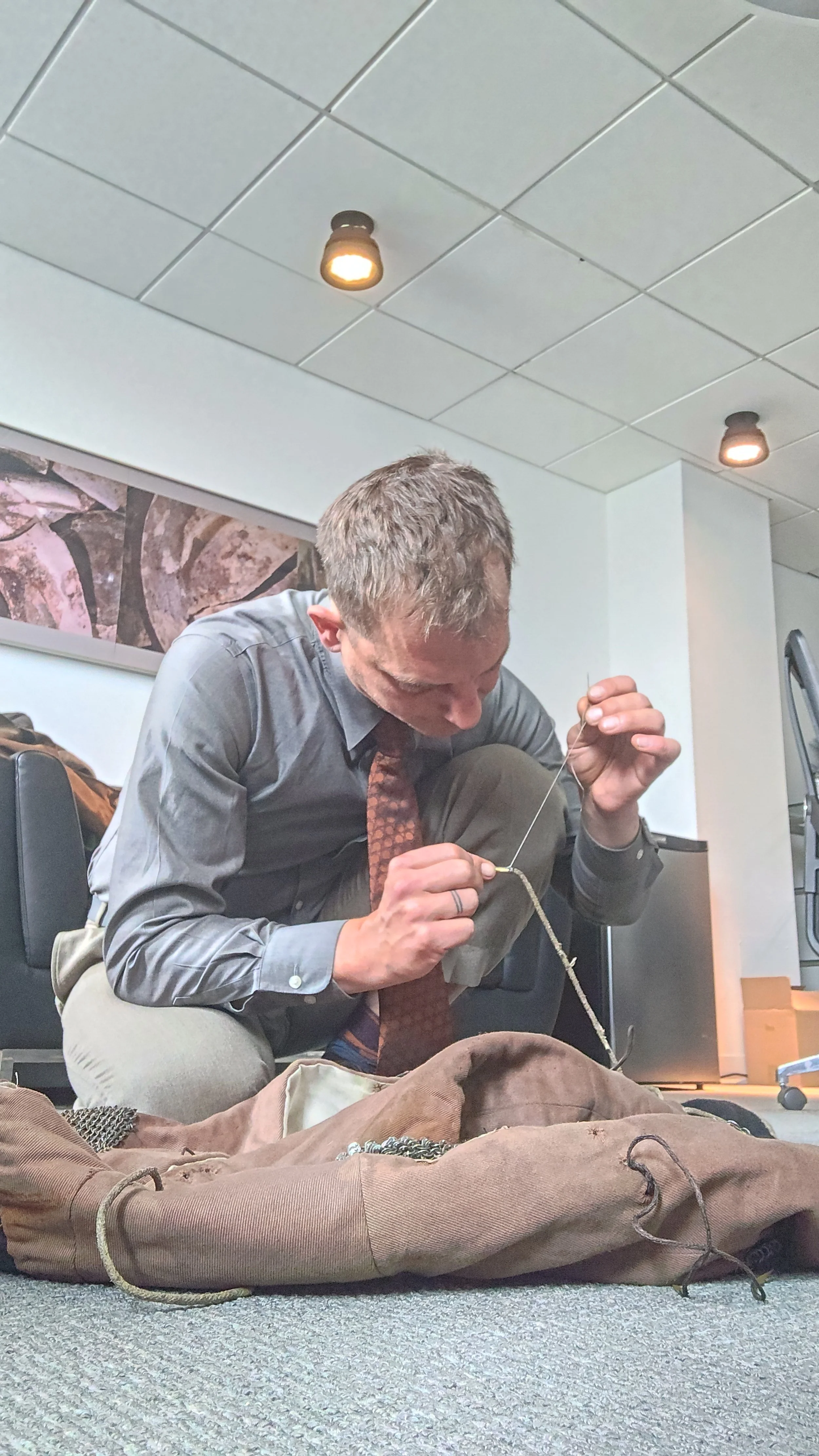The travelling exhibition “Knights” anchors in Canada for six months. It displays more than 145 objects from the prestigious collection of Frederico Stibbert (1838-1906), an English entrepreneur and art collector based in Florence. The Museo Stibbert designed this exhibition who already travelled around the world, notably in the USA (Ringling Museum of Art and Frist Art Museum 2019 and 2022), and in France (Musée d’Histoire de Nantes, 2024 –2025). For this iteration, the initial exhibition has been augmented with loans from collections in Paris, Florence, and Canada, reaching over 200 objects on display on two floors, with an impressive scenography.
I have the pleasure to loan my own armour replica, used for my research on European martial arts studies (2009-2014). It features in the interactive part of the exhibition in a case, alongside big screens showing parts of my short movies, notably “Fighting in Armour at the End of the Middle Ages” (2011) and “Obstacle Run in Armour” (2016). I am grateful to the museum for giving me such a beautiful platform to debunk widespread myths about the armour! The visitors will learn that one can move in an armour, see it in action, and admire the very functional reproduction of the harness of Frederick the Victorious (original kept at the Museum of Art in Vienna) used in my studies. The idea of displaying the armour this way is to give another perspective to these weird suits usually put on mannequins at a distance or behind glass. It is presented in an “exploded” display, showing the different pieces spread out as in a changing room, ready to be put on the body, with the garments that go underneath. This is uneasy to do with original objects, but my replica is perfect to achieve this purpose.
Prior to the opening, some happy visitors could enjoy a presentation of my research and handle the pieces of the armour. I wore it the day of the opening and had the pleasure of answering the first visitors’ questions about my work and the object directly in the exhibition. After a little bit of cleaning the next day, the armour rests under glass, and is on display until next October.






A successful assemblage of objects and popular culture
The exhibition is spread out on two floors with beautiful scenography and high ceiling. Since most of the objects from the Stibbert collection come from the 16th century, the exhibition staff made an excellent job to bring earlier objects from other collections and iconography to include the image of the knight of the Middle Ages in the previous centuries into the exhibition’s narrative. They manage as well to seamlessly mix the objects on display with screens or large wall projections showing relevant movie clips representing the very much alive popular culture around knights and knighthood. The first floor presents knightly equipment and culture; the second floor moves into jousting, knightly practices and orders (including the religious dimension), and includes an impressive weapons’ hall.






Interactive and experiential installations
Today’s challenge for lots of museums is to put the objects into stunning settings including interactive installations, large scale projections and bring the experiential dimension. Not an easy task, but one well done in this exhibition! It features several interactive stations, with a good mix of digital and physical interactions. The first floor includes interactives allowing to experience the wielding of knightly weapons, including the lance and the sword, but also stations to experience viewing through visors, handle pieces of armour as well as feel the weight of a suit. As a specialist, I have different ideas on how to improve these experiences, based on the design of interactives I have created in previous exhibitions. Mainly, it is about scaling the experience to the visitor, may it by a child of 5, a teenager of 15 or an adult, but also to find ways to break free from some of the limitations regarding freedom of movement with replicas. The second floor includes impressive large scale digital experience, including a kinect based one putting the visitor in a suit of armour and playing with one of the key questions at the end: what would be the values associated with knighthood in the 21st century.

If you have the opportunity, don’t miss it! Follow their social networks (FB/IG @pointeacalliere) and check the programming!
Special thanks to Samuel Moreau and Clémence Rampillon. Image Credits: Audrey Mc Mahon (for Pointe-à-Callière, cité d’archéologie et d’histoire de Montréal) and Daniel Jaquet












